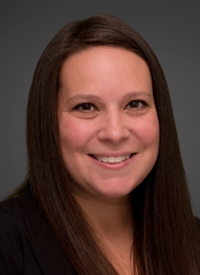Community Practices Share Their Experiences With the Oncology Care Model
Leah Owens, DNP, OCN, RN, shares how the total cost of care changed over time at her institution with the Oncology Care Model.
Leah Owens, DNP, OCN, RN

For some community oncology practices, the adoption of the Oncology Care Model (OCM) led to certain changes in the total cost of care. For instance, at Tennessee Oncology, implementing OCM led to an increase in pharmaceutical spending but a decrease in hospitalizations and emergency room use.
Findings were presented at the 2023 ASCO Quality Care Symposium by Leah Owens, DNP, OCN, RN, executive director of care transformation at Tennessee Oncology.
“Since the initiation of the Oncology Care Model, the dependence of drug spend on total cost of care has increased over time, despite appropriate drug utilization and early biosimilar adoption, reflecting a challenge in oncology value-based care,” Owens and her coinvestigators wrote in the poster.
Key Findings
In total, 27,927 OCM episodes were included in the study period, which lasted from 2016 to 2021. During this time, the total expenditure on drugs increased from 58% to 71%.
However, hospital spending decreased from 11.6% to 7.9%, and emergency room costs decreased from 1.4% to 1.0%, respectively. Prior to OCM implementation, 29.5% of drug costs were supportive compared with therapeutic; however, this decreased to 7.5% over the 11 performance periods.
Of note, by the end of the model, pathway adherence was greater than 90%, and the adoption rates for trastuzumab (Herceptin) and bevacizumab (Avastin), respectively, were 86% and 97%, respectively.
For example, at baseline, 76% of spending was allocated to antineoplastics, 3% of spending was for non-oncology drugs, and 21% went to supportive therapies. At performance period 3, the ratio was 84%, 4%, and 13%, respectively. At performance performance 7, the ratio was 86%, 3%, and 11%, and by performance performance 11, it had become 90%, 4%, and 6%.
At baseline, the percentage of spending allocated to drugs and blood products was 65%; by performance period 4, it had increased to 66%; by performance performance 8, it had increased to 71%;and by performance performance 11, it had increased to 71%.
Assessing the Cost of Care
As Owens and co-authors explained in the poster, Tennessee Oncology is an outpatient community oncology practice that oversees over 200 providers across 35 locations. The community practice chose to participate in Medicare’s Oncology Care Model, which was a voluntary alternative payment model that lasted from 2016 to 2021.
The Model was a voluntary episode payment model designed to improve the value of care for fee-for-service Medicare patients undergoing chemotherapy. The OCM had a 2-part payment system for participating practices. These practices received monthly payments to support care transformation, and they could earn performance-based payments if they met quality and spending goals.
To better understand how spending patterns had changed since the adoption of the OCM, investigators looked at the Medicare claims data.
Investigators were specifically interested in the percentage of spending over time in therapeutic vs supportive care drugs, emergency room utilization, and hospitalization.
Parameters such as biosimilar adoption and pathway adherence rates were monitored internally.
Reference
Owens L, Bilbrey L, Dickson NR, et al. Trend in breakdown of total cost of care for medical oncology over time: learnings from the Oncology Care Model and implications of future oncology value-based care.
Latest Conference Coverage
2 Commerce Drive
Cranbury, NJ 08512
All rights reserved.


